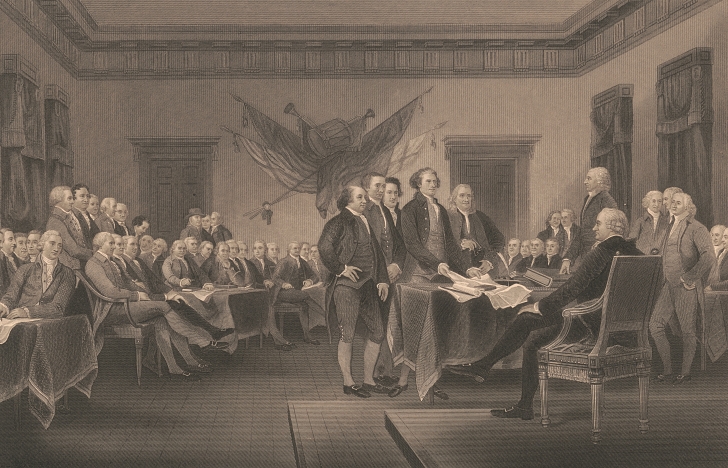Two Copies of Rare Engraving of Declaration of Independence Discovered
Copes like this are incredibly rare.
The Declaration of Independence is one of the most sacred national documents in the US. The line, “We hold these truths to be self-evident, that all men are created equal, that they are endowed by their Creator with certain unalienable Rights, that among these are Life, Liberty and the pursuit of Happiness” holds a special place in most Americans’ minds. Now 2 more copies of this precious document have been found, dating back to 1823.

Signed by the founding fathers on July 4th, 1776, the document outlines the tenants of the fledging nation still at war with her colonizing country. At that time there were only 13 colonies, each of which were declaring freedom from King George III and his unjust laws with this document. The version held by the US National Archives in the Rotunda for the Charters of Freedom is now faded and worn, but another copy was recently verified by the American Philosophical Society as being from the 1820s.
The print was made from an engraving by William J. Stone, one of only a handful still around today. The prints were commissioned in 1820 by John Quincy Adams, whose own father had signed the Declaration. The reprints were made because if the original Declaration was looking bedraggled after only 4 decades, Adams feared what would become of the precious words in years to come.

Stone took 3 years to finish his copper plate engraving of the Declaration. He made just over 200 copies for living signers of the Declaration, government officials, dignitaries, and one for himself. Less than 10 copies are known to exist today, all printed from the same, singular plate.
Secretary of State, Daniel Webster, donated this particular copy to the American Philosophical Society in 1842. However, it wasn’t until recently that the society’s Head of Conservation, Anne Downey, decided to research this copy in greater detail. For years it had been in the archives, assumed to be a newer copy of Stone’s work rather than one of his original prints.

The print was varnished and had turned very dark over time as well as having developed tears. It wasn’t until conservation began on the damaged piece that it was discovered to be an original Stone print. Up until that point it was presumed to have been a “cheap Victorian” copy.
Stone copied the original Declaration of Independence mark for mark, the only printmaker to do so. Other copies took liberties with the layout and design or even added images to the print. The prints sold in gift shops around the country today are all copies of Stone’s prints.
Stone sold his faithful copperplate engraving to the US Department of State in 1823. The original copperplate created by Stone was used in 1976, the Bicentennial, to create a further 6 copies, some of which are now in the National Archives.

At the moment there are no plans in the works by the Society to put the Stone copy on display to the public. However, it was announced around the same time that yet another one of the Stone prints was found- this time in Edinburgh, Scotland. This print is thought to have been passed through the family of signatory Charles Carol III, whose granddaughter, Emily Caton, ended up living in Scotland. The print was found at a family home, unknown to researchers for the past 177 years. Caton’s husband, John McTavish, signed his name on the print himself and a blurb about Carol was added as well.
The Carol copy of the Stone print is set to be auctioned through Freeman’s Auctions on July 1st, 2021, in Philedelphia, Pennsylvania. The auction estimate for the Carol copy was announced at $500,000-$800,000.
SKM: below-content placeholderWhizzco for DOT

